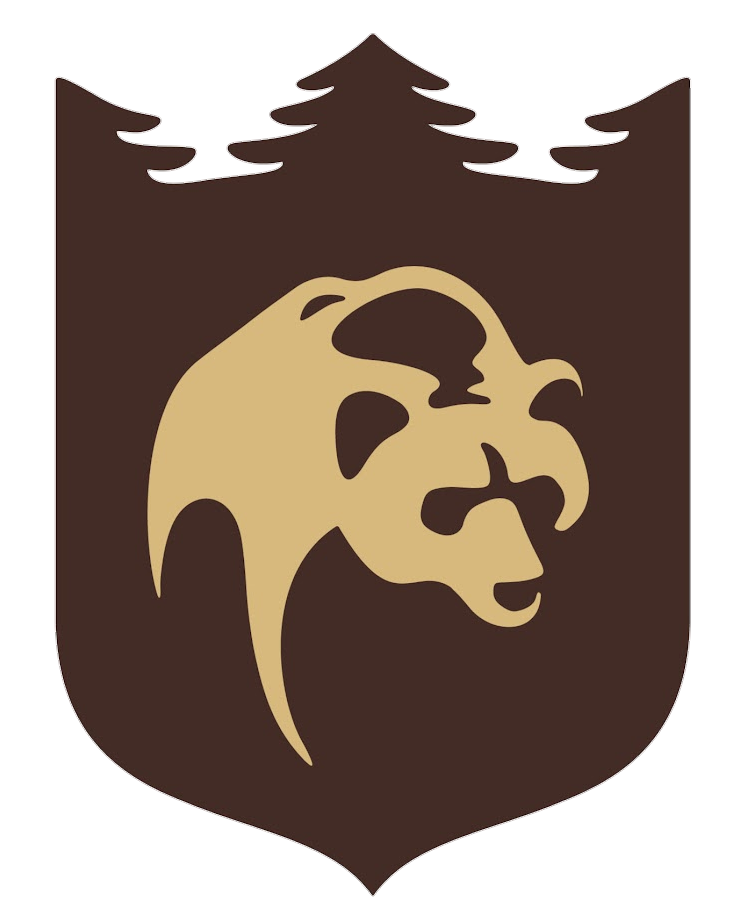FAUNA OF KURILSKY NATURE RESERVE
Brown bears
The fauna of Kurilsky Nature Reserve on Kunashir Island is much more diverse than on the other Kuril Islands. Brown bear (Ursus arctos) is the largest mammal of the nature reserve. It doesn't inhabit the Lesser Kuril Ridge and Shikotan Island.
On Kunashir Island there are bears of various fur colors, from almost black to silver with many transition types. It is a distinctive feature of the brown bear island population.
You can meet them in the surroundings of fishing ports when salmonids run (Oncorhynchus gorbuscha, Oncorhynchus keta). At that time bears are so concentrated at fishing that they may not notice any humans.
On Kunashir Island there are bears of various fur colors, from almost black to silver with many transition types. It is a distinctive feature of the brown bear island population.
You can meet them in the surroundings of fishing ports when salmonids run (Oncorhynchus gorbuscha, Oncorhynchus keta). At that time bears are so concentrated at fishing that they may not notice any humans.
Seals
One of the biggest herds of the spotted seal (Phoca largha) on Kunashir Island is located on Blizky Island north of the Cape Ivanovsky. Phoca vitulina stejnegeri lives there too. It is a mammal with beautiful coloration, dark with light circles, because of which it is called "flower seal".
This rare subspecies of harbour seal (Phoca vitulina) is in the Red Data Book of Russia because of its small population.
This rare subspecies of harbour seal (Phoca vitulina) is in the Red Data Book of Russia because of its small population.
Red-crowned cranes
Red-crowned cranes (Grus japonensis) nest on the Veselovsky Peninsula (protective zone of the nature reserve). This rare species inhabits Far East and Japan. The species is endangered and is on IUCN Red List and in Red Data Books of Russia, Japan, South Korea, Asia, Sakhalin Region, Primorsky Region, Khabarovsk Region and Kamchatka Region.
Its natural distribution is limited by Far East and Japan. The island population of red-crowned cranes inhabits the nature reserve and lives sedentary life in the eastern Hokkaido and the South Kurils.
Its natural distribution is limited by Far East and Japan. The island population of red-crowned cranes inhabits the nature reserve and lives sedentary life in the eastern Hokkaido and the South Kurils.
The Veselovsky Peninsula is the place where water birds stop when they migrate. There you can observe numerous flocks of geese and ducks, different waders, from small plovers to large Far East curlews and grey herons.
Steller sea lions and northern fur seals migrate along the coasts of the Veselovsky Peninsula. Dahurinaia kurilensis, a rare species of freshwater mollusc, inhabits the peninsula.
Blakiston's fish owl
A rare subspecies of blakiston's fish owl (Bubo blakistoni blakistoni) inhabits Kunashir Island. There are only 28 confirmed couples of these birds.
It is a globally rare species that is in the Red Data Book of Russia (category 2, decreasing population and|or distribution), in the Red Data Book of Sakhalin Region (category 1, critically endangered), on the IUCN Red List (category EN, endangered) and in the CITES Appendix II.
It is a globally rare species that is in the Red Data Book of Russia (category 2, decreasing population and|or distribution), in the Red Data Book of Sakhalin Region (category 1, critically endangered), on the IUCN Red List (category EN, endangered) and in the CITES Appendix II.
Reptiles
Kunashir is the only island of the Kurils inhabited by reptiles. There are three racer species: Japanese rat snake (Elaphe climacophora), Japanese forest rat snake (Euprepiophis conspicillata) and Japanese striped snake (Elaphe quadrivirgata). Mamushi (Gloydius blomhoffii), founded there in 2013, and Plestiodon latiscutatus inhabit the island too.
There are three amphibian species: Japanese tree frog (Dryophytes japonicus), Dybowski's frog (Rana dybowskii) and Siberian salamander (Salamandrella keyserlingii).
There are three amphibian species: Japanese tree frog (Dryophytes japonicus), Dybowski's frog (Rana dybowskii) and Siberian salamander (Salamandrella keyserlingii).
The Oskolki Islands
The Oskolki Islands is a small group of rocky islands of the Lesser Kuril Ridge south-west to Polonskogo Island. The Oskolki Islands include the Lisyi Islands, the Shishki Islands and the Peschernaya Rock. These Islands are unique because of their seabird colonies: spectacled guillemot (Cepphus carbo), tufted puffin (Fratercula cirrhata), rhinoceros auklet (Cerorhinca monocerata), thick-billed murre (Uria lomvia), common murre (Uria aalge), red-faced cormorant (Phalacrocorax urile) and seagulls.
The southernmost breeding herd of steller sea lion (Eumetopias jubatus) is also located there. Steller sea lion is a rare species from the Otariidae (eared seal) family. It is included to the Red Data Book of Russia. The largest herds of eared seals (Phoca vitulina stejnegeri, Phoca largha) are located on the Demina Islands (the Lesser Kuril Ridge). It is the main habitat of the southernmost sea otter (Enhydra lutris) population on the Kurils. Its population has risen to 100 individuals in recent years.
The southernmost breeding herd of steller sea lion (Eumetopias jubatus) is also located there. Steller sea lion is a rare species from the Otariidae (eared seal) family. It is included to the Red Data Book of Russia. The largest herds of eared seals (Phoca vitulina stejnegeri, Phoca largha) are located on the Demina Islands (the Lesser Kuril Ridge). It is the main habitat of the southernmost sea otter (Enhydra lutris) population on the Kurils. Its population has risen to 100 individuals in recent years.



© All rights reserved.
このサイトのコンテンツの無断転載を禁止します。
このサイトのコンテンツの無断転載を禁止します。












